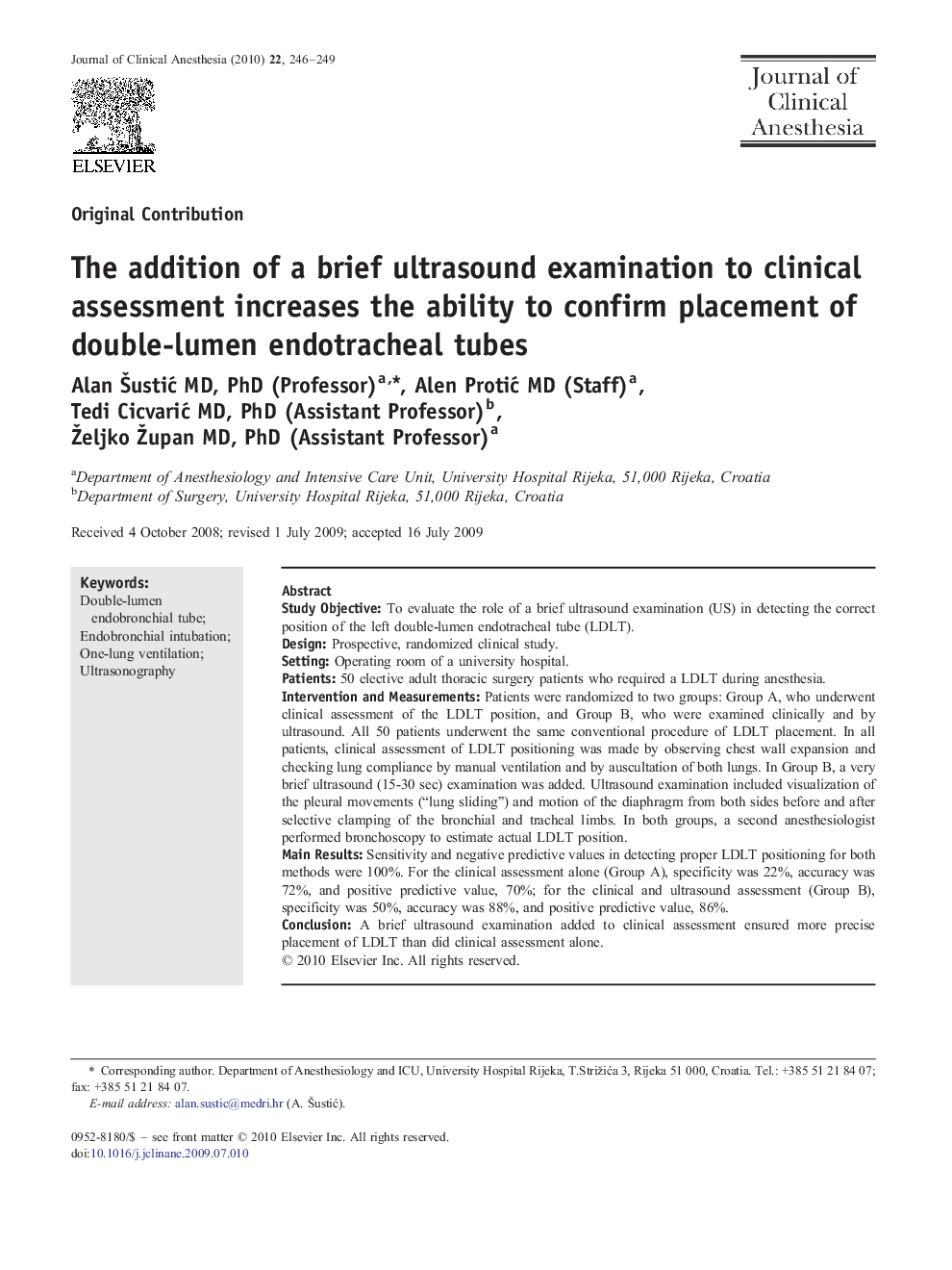| Article ID | Journal | Published Year | Pages | File Type |
|---|---|---|---|---|
| 2763290 | Journal of Clinical Anesthesia | 2010 | 4 Pages |
Study ObjectiveTo evaluate the role of a brief ultrasound examination (US) in detecting the correct position of the left double-lumen endotracheal tube (LDLT).DesignProspective, randomized clinical study.SettingOperating room of a university hospital.Patients50 elective adult thoracic surgery patients who required a LDLT during anesthesia.Intervention and MeasurementsPatients were randomized to two groups: Group A, who underwent clinical assessment of the LDLT position, and Group B, who were examined clinically and by ultrasound. All 50 patients underwent the same conventional procedure of LDLT placement. In all patients, clinical assessment of LDLT positioning was made by observing chest wall expansion and checking lung compliance by manual ventilation and by auscultation of both lungs. In Group B, a very brief ultrasound (15-30 sec) examination was added. Ultrasound examination included visualization of the pleural movements (“lung sliding”) and motion of the diaphragm from both sides before and after selective clamping of the bronchial and tracheal limbs. In both groups, a second anesthesiologist performed bronchoscopy to estimate actual LDLT position.Main ResultsSensitivity and negative predictive values in detecting proper LDLT positioning for both methods were 100%. For the clinical assessment alone (Group A), specificity was 22%, accuracy was 72%, and positive predictive value, 70%; for the clinical and ultrasound assessment (Group B), specificity was 50%, accuracy was 88%, and positive predictive value, 86%.ConclusionA brief ultrasound examination added to clinical assessment ensured more precise placement of LDLT than did clinical assessment alone.
